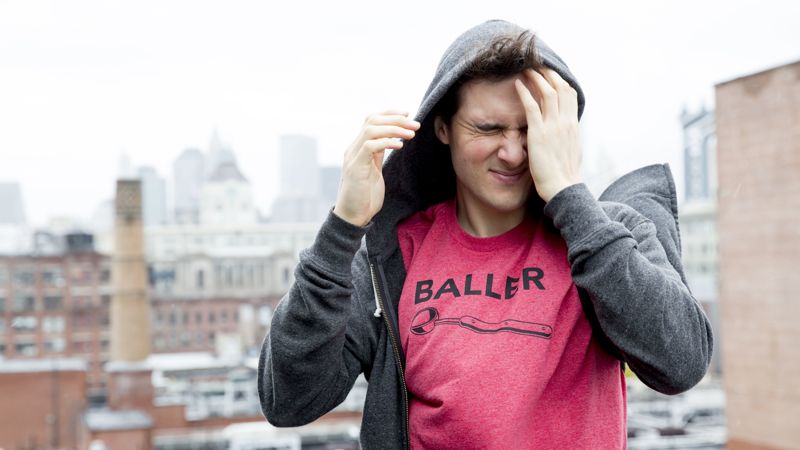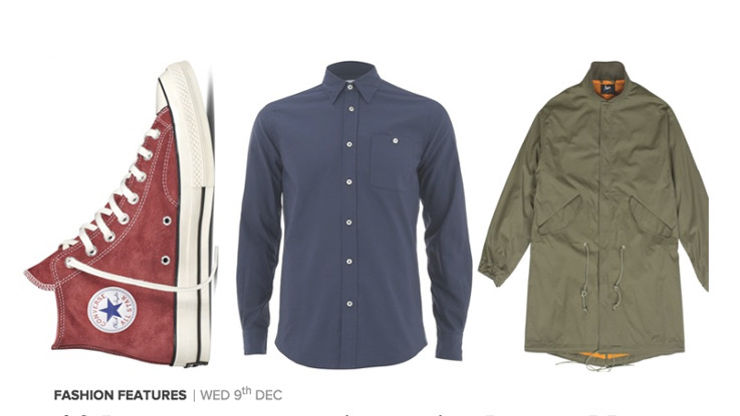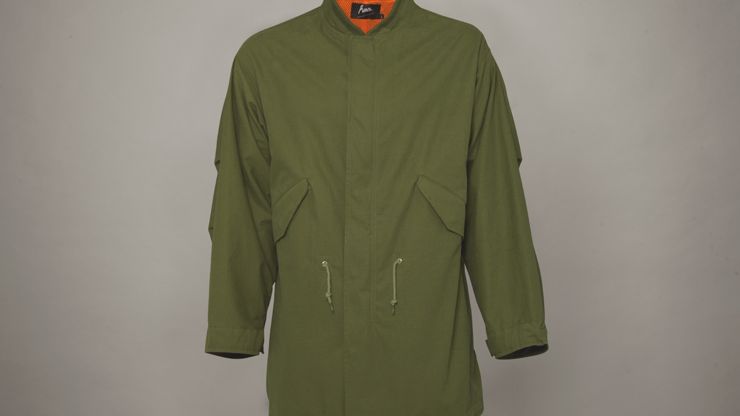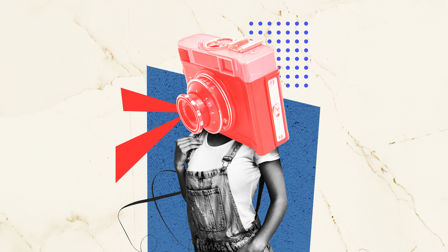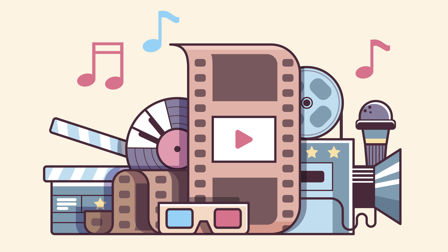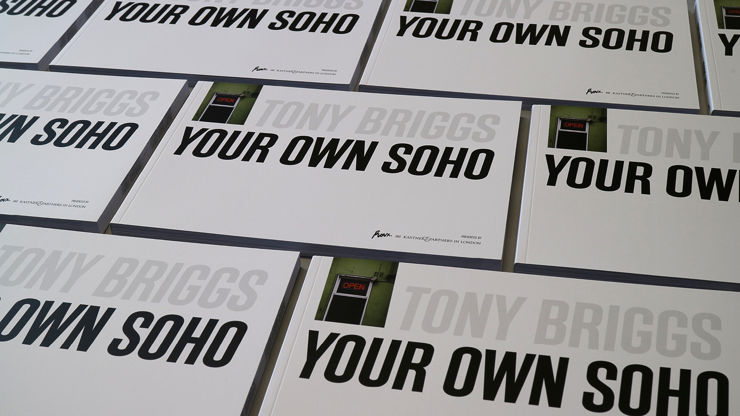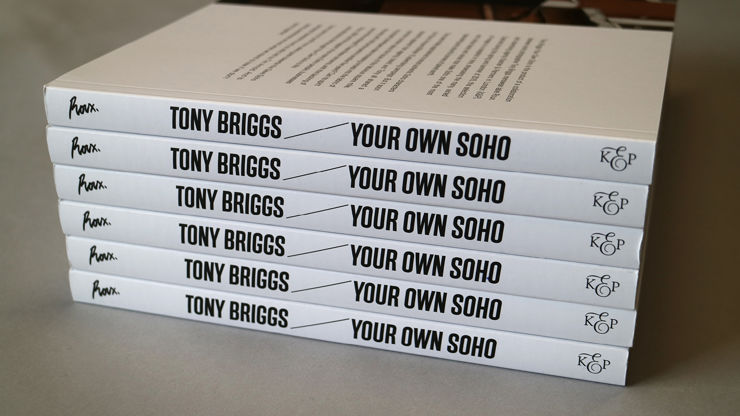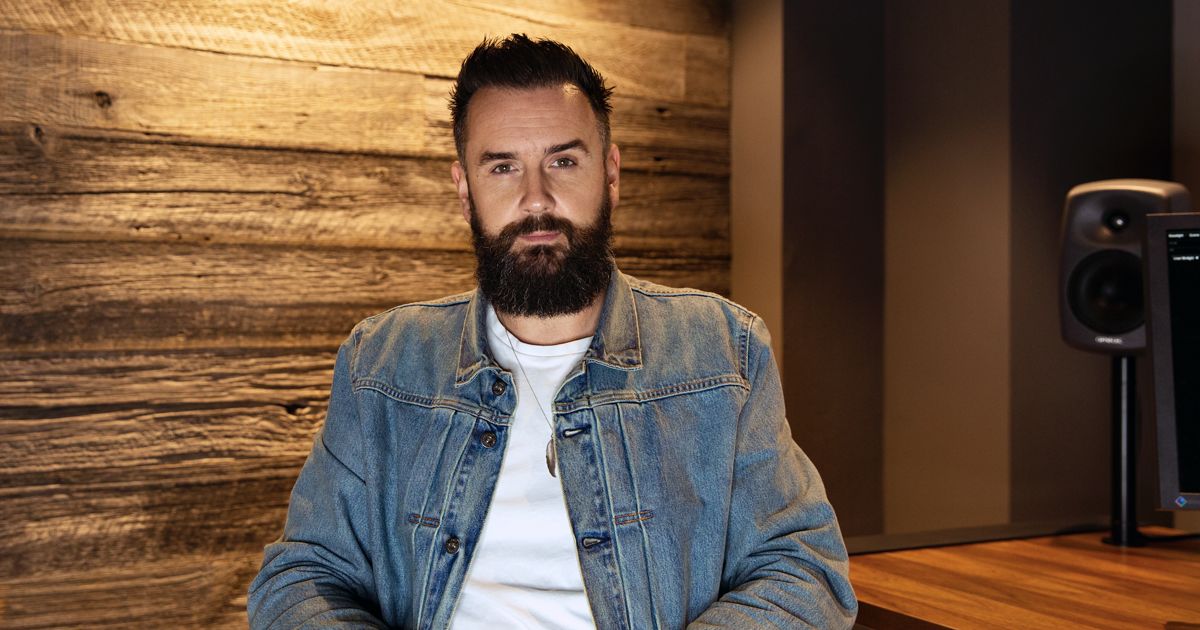Greg White: Post production is a dirty word
Natalie Mortimer talks to Envy Managing Director Greg White about his former career in fashion, the creative power of technology in advertising and the evolving role of the post production house.
What does a truck full of lard and four guinea pigs have common?
If you guessed the start of a bad joke, you’d be wrong, but if you guessed the start of Greg White’s career you’d (weirdly) be correct.
The Big Breakfast was a crazy show, and it was pretty much lawless, everything went.
As entries into the production industry go, White’s was something of a baptism of fire. He joined Planet 24’s anarchic morning show, The Big Breakfast, as a runner in the early 2000s and quickly found himself fulfilling near-impossible tasks for various spots on the programme, usually in the dead of night. “The Big Breakfast was a crazy show, and it was pretty much lawless, everything and anything went,” laughs White.
“I always say to the runners at Envy, 'enjoy your time in the role, it can be a tough position but hugely rewarding'. I always believed if I could be a runner at the Big Breakfast, I could do anything, because I was often completely on my own with a full programme at my mercy. I had to be resourceful and to think on my feet about what was available to me.”
Credits
powered by
- Agency 4Creative/London
- Production Company 4Creative
- Director Alex Boutell
-
-
Unlock full credits and more with a Source + shots membership.
Credits
powered by
- Agency 4Creative/London
- Production Company 4Creative
- Director Alex Boutell
- Editor Adam Rudd
- Online Dean Wyles
- VFX Analog Studio
- Music Leland Music
- Audio – mix Rich Martin
- Executive Producer Shananne Lane
- Creative Director Eoin McLaughlin
- Creative Andy Shrubsole
- Head of 4Creative Alice Tonge
- Creative Scott Taylor
- Head of Production Clare Brown
- Producer Louise Oliver
- DP Matt Fox / (DP)
- Production Designer Simon Davis / (Production Designer)
- Colorist George K
- VFX Supervisor/Lead 2D Fabio Zaveti
- 2D Artist Valentina Bartiromo
- Lead 3D Simon Reeves
- 3D Artist Matt Chandler
- 3D Artist Tim Phillips @ MPC
- VFX Producer Rose Nicholson
- Scones Animation Joe Sparkes
- Music Supervisor Abi Leland
- Music Supervisor Ed Bailie
- Music Supervisor Codie Childs
- Music Arranger Benjamin Price

Credits
powered by
- Agency 4Creative/London
- Production Company 4Creative
- Director Alex Boutell
- Editor Adam Rudd
- Online Dean Wyles
- VFX Analog Studio
- Music Leland Music
- Audio – mix Rich Martin
- Executive Producer Shananne Lane
- Creative Director Eoin McLaughlin
- Creative Andy Shrubsole
- Head of 4Creative Alice Tonge
- Creative Scott Taylor
- Head of Production Clare Brown
- Producer Louise Oliver
- DP Matt Fox / (DP)
- Production Designer Simon Davis / (Production Designer)
- Colorist George K
- VFX Supervisor/Lead 2D Fabio Zaveti
- 2D Artist Valentina Bartiromo
- Lead 3D Simon Reeves
- 3D Artist Matt Chandler
- 3D Artist Tim Phillips @ MPC
- VFX Producer Rose Nicholson
- Scones Animation Joe Sparkes
- Music Supervisor Abi Leland
- Music Supervisor Ed Bailie
- Music Supervisor Codie Childs
- Music Arranger Benjamin Price
Above: The Great British Bake Off trailer for 2019, with VFX by Envy Advertising.
Craving more stable hours and a little more creative input, White made a move into Planet 24’s transfer department, where he worked on The Big Breakfast’s VTs including Snap, Crackle and Pop. “I'd never seen a digideck in my life, but they trained me up and I worked there until the show finished.”
With a taste for production, he took up a role at Blue Post Production under Dave Cadle, where he worked his way up to Head of Machine Room and oversaw commercial projects with the likes of TBWA and Leo Burnett.
I was working between post production and clothing at the time and we just built it and built it to a point that I ended up working in fashion full time.
But soon, an altogether different opportunity knocked on his door. “An old school friend of mine asked me if I wanted to start a clothing label, and so we did. We started by just doing some basic t-shirt prints. I was working between post production and clothing at the time and we just built it and built it to a point that I ended up working in fashion full time.”
The line exploded, catching the attention of a long list of famous faces including M.I.A, Biffy Clyro, the Streets, Fatboy Slim, The Prodigy and more.
Chateaux Roux was created in 2006 and the brand opened up a bricks and mortar store just off Carnaby Street. The line exploded, catching the attention of a long list of famous faces including M.I.A, Biffy Clyro, the Streets, Fatboy Slim, The Prodigy and more. It also caught the attention of FHM, and was named by the magazine as Best New Menswear label in 2015, while its parka was chosen by GQ for its 10 Best Menswear Items in the World.
Above: The CG spread on White's label, Chateaux Roux, and the Chateaux Roux parka.
As part of the label, White created a book called Your Own Soho to celebrate the iconic area’s quirky places and faces. “It started off as a lookbook for one of our collections, whereby we were going to ask brilliant, characterful-rich faces in and around Soho, like bar owners and the guys that work on Berwick Street market, to wear our clothes for a shoot.”
We got quite a nice offer from an investor, but rather than being excited about it, I looked at my wife and said, 'I don't think I want this’.
With a huge passion for Soho, White decided to collaborate with the Save Soho foundation to create the book, in association with photographer Tony Briggs and advertising agency Kastner & Partners.
“All my designs were inspired by people and buildings and environments in and around Soho,” explains White. “I met my wife in Soho, my father-in-law used to work in Soho in advertising and I wet my babies heads in Soho.”
Despite the success of Chateaux Roux, White felt once again drawn to post production having never really enjoyed the business side of the fashion industry. “We had just started a campaign through Seeders to raise investment to open some more shops,” he says.
I came in and met him and he offered me the Executive Producer role at Envy, which I took immediately and I've loved it ever since.
“We got quite a nice offer from an investor, but rather than being excited about it, I looked at my wife and said, 'I don't think I want this’, and it became apparent I couldn't take anyone's investment if I wasn't invested in the business.
“It was very cathartic. I had a chat with the investors the following day and within a few months I was sat, full circle, with Dave Cadle [CEO of Envy Advertising] who I had started off with at Blue. I came in and met him and he offered me the Executive Producer role at Envy, which I took immediately and I've loved it ever since.”
Above: Your Own Soho, created by White and his fashion label Chateaux Roux alongside photographer Tony Briggs and agency Kastner & Partners.
In 2017 White was promoted to Managing Director of Envy Advertising, the commercial division of Envy, which is currently building on the opening of its dedicated short form facility in Mortimer Street.
It’s an industry that’s in flux — for the better — says White, with the last few years bringing a number of changes to the way Envy and its contemporaries get involved in projects.
I see work now that is entering into VR and AI that is offering us an exploration into the arts and education that we have never previously had access to.
“I'm not the biggest fan of the term post production because I don’t see it as a post approach — I see it as a creative and supportive role that we play,” says White. “We get approached at an earlier part of the process now and I want more of it because when we get involved early on there is more of a marriage and synergy in a project both creatively and technically.
“It's something that I champion, and I'd encourage directors and creative teams to come in at the embryonic stage of an idea and I can get a team together and we can talk through what they are looking to achieve and how we can help them do it.”
I'm not the biggest fan of the term post production because I don’t see it as a post approach.
White is also an evangelist for the creative power of technology, which he believes is leading to more immersive storytelling than ever before. “I see work now that is entering into VR and AI that is offering us an exploration into the arts and education that we have never previously had access to,” he says. “In terms of VR it’s not something that we [at Envy] have touched on in great volume yet, but I'm seeing the work and opportunities the industry is creating and its frighteningly good.”
Credits
powered by
- Agency BBDO NY
- Production Company Sanctuary Content
- Director Cole Webley
-
-
Unlock full credits and more with a Source + shots membership.
Credits
powered by
- Agency BBDO NY
- Production Company Sanctuary Content
- Director Cole Webley
- Associate Creative Director Jim Connolly
- Chief Creative Officer David Lubars
- Chief Creative Officer Greg Hahn
- Creative Director Bianca Guimaraes
- Creative Director Roberto Danino
- Creative Director Gary Du Toit
- Creative Director Lance Vining
- Executive Producer Jessica Coccaro
- Executive Producer Digital James Young
- HP Integrated Production David Rolfe
- Executive Producer/Owner Preston Lee
- Executive Producer Kristen Bedard Johnson
- DP Paul Meyers
- Editor Paul Martinez
- Assistant Editor Chris Angel
- Assistant Editor Jeff Lopus
- Executive Producer/Partner Sila Soyer
- Post Producer Fanny Cruz
- Colorist Tom Poole
- Executive Producer Ashley McKim
- Color Producer Alexandra Lubrano
- Music Human Music & Sound Design/USA
- Composer/Creative Director/Audio Mix Sloan Alexander
- Executive Producer James Dean Wells

Credits
powered by
- Agency BBDO NY
- Production Company Sanctuary Content
- Director Cole Webley
- Associate Creative Director Jim Connolly
- Chief Creative Officer David Lubars
- Chief Creative Officer Greg Hahn
- Creative Director Bianca Guimaraes
- Creative Director Roberto Danino
- Creative Director Gary Du Toit
- Creative Director Lance Vining
- Executive Producer Jessica Coccaro
- Executive Producer Digital James Young
- HP Integrated Production David Rolfe
- Executive Producer/Owner Preston Lee
- Executive Producer Kristen Bedard Johnson
- DP Paul Meyers
- Editor Paul Martinez
- Assistant Editor Chris Angel
- Assistant Editor Jeff Lopus
- Executive Producer/Partner Sila Soyer
- Post Producer Fanny Cruz
- Colorist Tom Poole
- Executive Producer Ashley McKim
- Color Producer Alexandra Lubrano
- Music Human Music & Sound Design/USA
- Composer/Creative Director/Audio Mix Sloan Alexander
- Executive Producer James Dean Wells
Above: The innovative Monica Lewinsky anti-bullying campaign.
White also believes that technology is shaping advertising for the better by bringing a “clarity of thought” to what is accessible to the industry. “I've always argued that our concentration spans are next to zero right now and the impact of advertising has to be so quick and so powerful,” he says.
“The industry is tapping into those different mediums and platforms that we are all using with a creative use of technology. So, we’re not just delivering work in a 16:9 format, we are looking beyond that standard delivery into different formats and interesting ways to deliver it to spark our imagination.”
It was breathtaking and a brilliant, considered use of technology.
Once such example of this, says White, is a recent public service announcement out of the US that comes with an interactive twist. Released by Monica Lewinsky, The Epidemic highlights the activist’s latest campaign against online bullying. Created by BBDO New York, the video depicts a teen girl watching a television report about "a mysterious virus sweeping the country" as she glances at her phone.
She grows increasingly worried before being rushed into a hospital emergency room. Viewers are then prompted to enter their phone numbers before being sent a link to see the video in a different light by receiving a series of bullying text messages as they watch it.
The industry is now looking at different ways to approach the arts and education, which is exciting for me and my children.
“It was breathtaking and a brilliant, considered use of technology,” says White. “It took what is a massive problem, and something that I’m worried about with my daughters, and turned it into a compelling piece of advertising.”
Education and the arts is another area that White sees the intersection of technology and creativity playing an important role in the future. “The industry is now looking at different ways to approach the arts and education, which is exciting for me and my children,” he says.
“Before, taking them to the Tate or National Portrait Gallery used to be a bit boring for them, but now they can be immersed and when a VR application shows them how a painting was created or the background of an artist, suddenly they walk away and they are talking about it, and if they are talking about it they are excited about it and that will do for me.”
)

